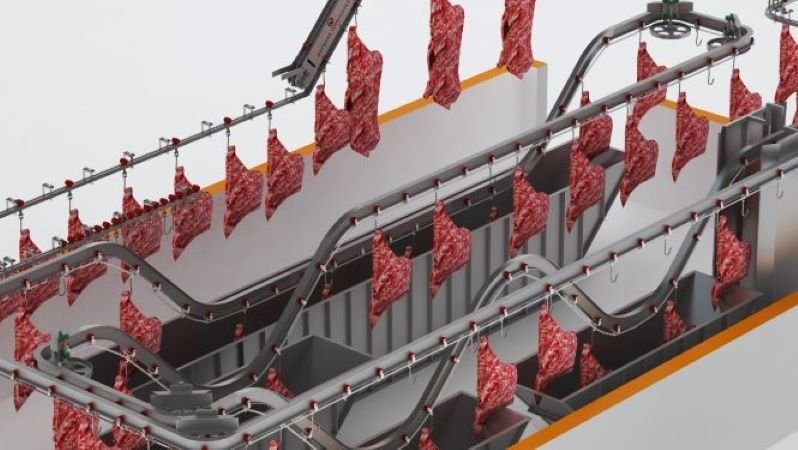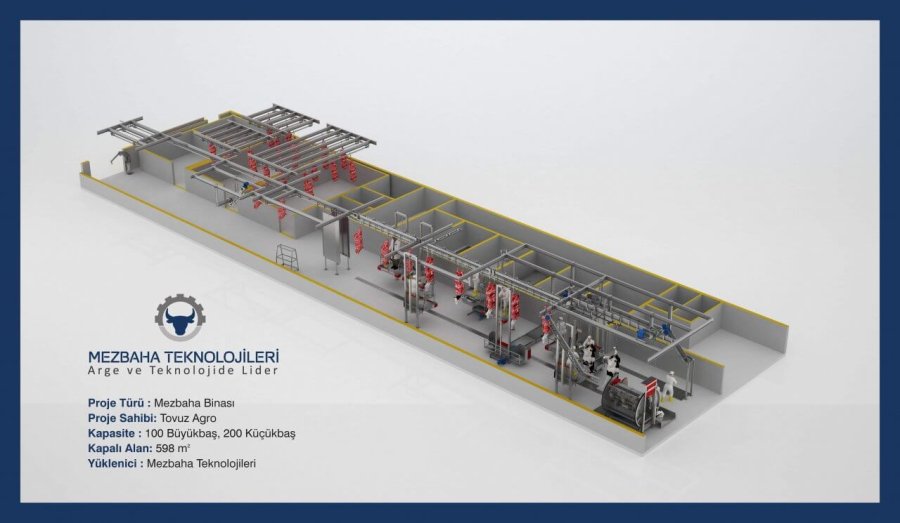
What Documents Are Required for Slaughterhouse Installation?
Discover what documents are required for slaughterhouse installation to ensure compliance and smooth operations in your meat processing facility.
25 August, 09:08
What Documents Are Required for Slaughterhouse Installation?
Building and operating a slaughterhouse is not just about having the right equipment or physical space. It is also a highly regulated process that requires strict compliance with legal, environmental, and sanitary standards.
Whether you are planning a small local abattoir or a large-scale industrial facility, understanding what documents are required for slaughterhouse installation is one of the first and most important steps.
Why Documentation Matters in Slaughterhouse Projects
Unlike many other industries, equipment for slaughterhouse deal directly with public health, food safety, and animal welfare. This unique positioning necessitates comprehensive documentation throughout all stages of a project. Proper documentation serves as a critical safeguard, ensuring that all operations comply with established standards and regulations. Government oversight is particularly stringent in this sector, with regulations that demand proof of compliance before any plant can begin construction or operations.
This means that thorough documentation not only facilitates the approval process but also enhances transparency and accountability. Moreover, maintaining detailed records allows for better internal audits and improvements in operational practices. In the long run, effective documentation can lead to increased consumer trust and improved relationships with regulatory bodies, making it a vital aspect of successful slaughterhouse projects.
Without the proper documents, you may face:
-
Costly delays in construction.
-
Legal penalties or forced shutdowns.
-
Reputational damage that affects business growth.
Key Documents Required for Slaughterhouse Installation

Business Registration and Licensing
The foundation of any slaughterhouse project is legal business registration. This crucial step ensures compliance with local regulations and fosters trust with stakeholders. Authorities typically require proof of company incorporation or partnership to validate the business structure. In addition, obtaining a trade license specific to food production or meat processing is essential for operating legally. This license confirms that the business adheres to health and safety standards, ultimately safeguarding public health and enhancing the credibility of the operation.
Land Use and Zoning Permits
Slaughterhouses cannot be built just anywhere. To establish such facilities, you require local government approval, which confirms that the land is zoned for industrial or food processing activities. This zoning ensures that the operations are compatible with surrounding land uses and do not negatively impact the community. In addition to zoning requirements, landowners must possess a valid land ownership or lease agreement. This agreement serves as proof of the right to utilize the property for designated purposes, ensuring compliance with local regulations.
Finally, obtaining a zoning clearance certificate from municipal authorities is essential. This certificate verifies that all necessary conditions have been met, allowing for the legal establishment and operation of the slaughterhouse within the designated zone.
See also: carcass splitting saw robot
Environmental Impact Assessment (EIA)
One of the most critical documents is an EIA report. This report assesses the potential environmental consequences of proposed projects, ensuring that developers are aware of their impact. For facilities like slaughterhouses, which generate wastewater, by-products, and emissions, the EIA is essential for demonstrating compliance with environmental regulations.
Regulators require proof that your facility will properly manage waste, protect local ecosystems, and follow national environmental standards. By addressing these factors in the EIA report, stakeholders can mitigate adverse effects and promote sustainable practices in the industry.
Building and Construction Permits
Before breaking ground, you must secure several essential documents to ensure your construction project adheres to local regulations. First, obtain architectural drawings approved by local authorities, which outline the design and specifications of your building.
Next, it is crucial to acquire structural safety permits that confirm the integrity of the construction materials and design. Finally, ensure you have fire safety compliance certifications to protect both the building and its occupants from potential hazards. These steps are vital for a successful construction process.

Veterinary and Sanitary Approvals
Since meat safety is tied to animal health, veterinary authorities play a major role in ensuring compliance with regulations. This involves obtaining veterinary approval for animal handling areas, which is critical for maintaining hygiene and preventing contamination. Additionally, establishments must develop comprehensive sanitation plans for slaughtering, processing, and storage to ensure products meet safety standards.
These plans outline procedures for cleaning and sanitizing equipment and facilities. Furthermore, Hazard Analysis and Critical Control Point (HACCP) documentation is essential for identifying potential hazards and implementing controls to mitigate risks throughout the meat production process.
Waste Management and Water Treatment Plans
Effective waste management and water treatment plans are crucial for slaughterhouses, which must prove they can responsibly handle by-products, blood, wastewater, and other waste. To comply with regulations, these facilities are required to submit several important documents.
Among the essential documents are the waste treatment system design approval, which outlines how waste will be processed, and agreements with licensed waste disposal contractors to ensure proper handling and disposal of hazardous materials. Additionally, obtaining effluent discharge permits is vital for regulating the release of treated wastewater into the environment.
Occupational Health and Safety Documentation
Occupational Health and Safety documentation is crucial for demonstrating commitment to worker safety. Authorities will expect you to show how worker safety will be protected, and having proper documentation is essential. Essential documents may include workplace safety compliance certificates, which verify adherence to safety regulations.
Additionally, maintaining staff training records for handling equipment and animals ensures that employees are well-prepared for their tasks. Finally, outlining personal protective equipment (PPE) guidelines helps clarify the necessary safety measures to protect workers in various environments.
Import/Export Licenses (If Applicable)
For slaughterhouses targeting international markets, obtaining import/export licenses is crucial for compliance with regulations. These licenses ensure that all operations meet the necessary legal standards for international trade. In addition to the licenses, additional documents are required, such as export certification from food safety authorities.
This certification verifies that the meat products meet safety and quality standards established by the exporting country. Furthermore, compliance with the importing country’s meat inspection standards is essential. Adhering to these guidelines helps facilitate smoother transactions and ensures that products are safe for consumers in the international market.
See also: cattle stunner